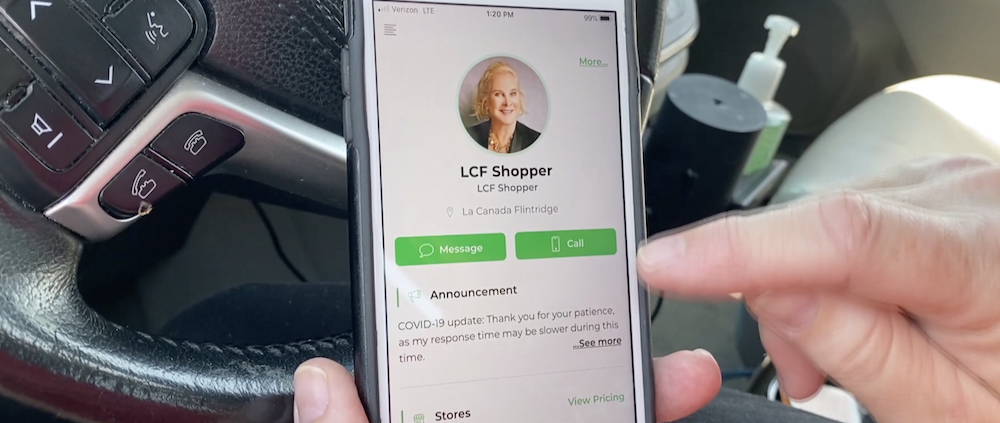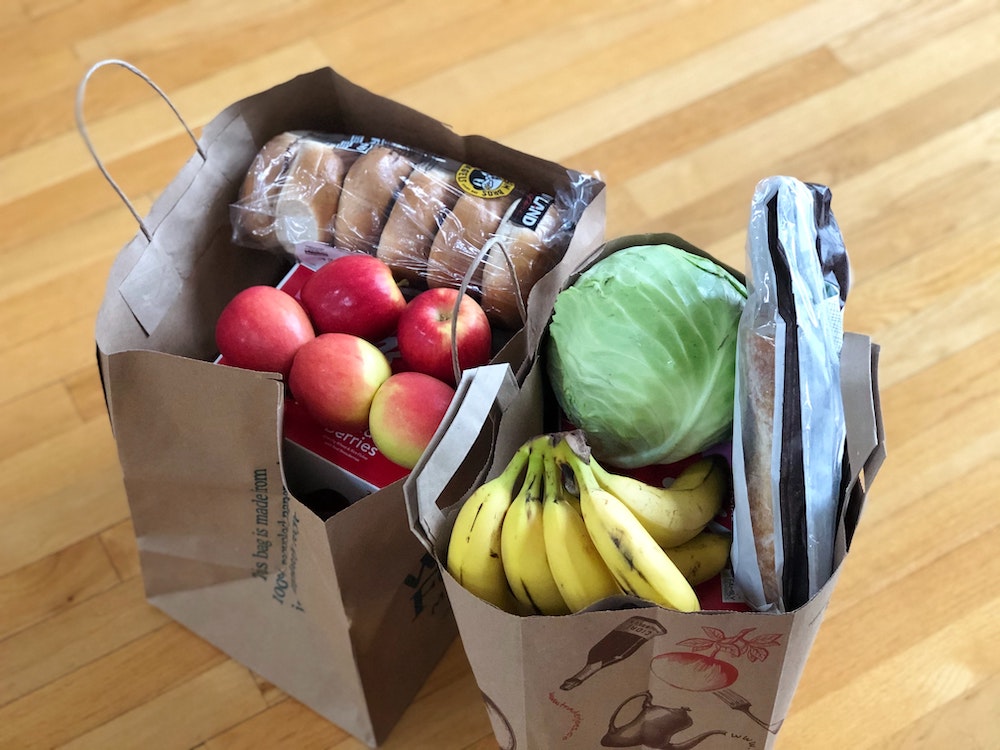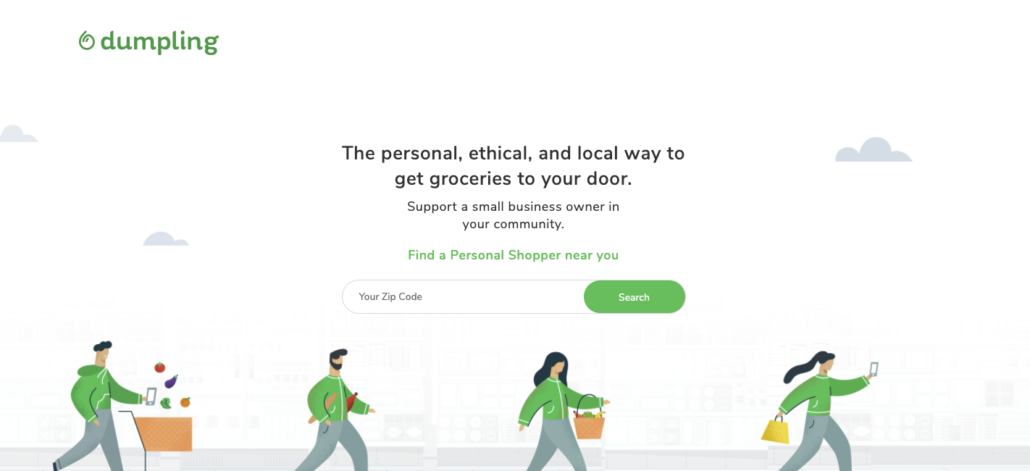Wait! Come Back! How Our Email Winback Strategy Converted at 27% For Dumpling
At its simplest, Dumpling is a grocery delivery app. But dig a bit further and you’ll see that Dumpling is taking a service that has historically capitalized on the gig economy and flipping it.
Dumpling’s competitors like Instacart automatically match you with a shopper. Which keeps things simple, no doubt, but you get no extra communication with the person picking out your produce. So when you’ve put “cabbage” on your list and your shopper shows up with a purple cabbage instead of a napa cabbage, you’re either changing your dinner plans or you’re running to the store.
Dumpling was founded on the idea that both shoppers and customers could benefit from open, transparent communication and an actual relationship with the people on the other end of the line. So, when you download the Dumpling app and drop in your zip code, Dumpling lists personal shoppers (a.k.a. business owners) that you can connect with through the app. Then, once you send them your list and they hit the store, they can communicate with you in real-time when they walk up to grab a cabbage and aren’t sure which one.
The best part: you can order with your personal shopper again and again, so eventually, they won’t even have to ask, they just know you want that napa cabbage.
Dumpling reached out to Tuff looking for a growth marketing agency that could help them attract and keep more engaged users. Here’s a look at what we worked on together.
Goal 1: Drive App Installs
Dumpling reached out in search of a team to help them supercharge their acquisition efforts and smooth their new users’ path to conversion.
We knew we wanted to drive some quick wins (and the sophisticated Dumpling team had already established a number of paid acquisition campaigns). So we started with robust Facebook and Google Search strategies to drive users to download the Dumpling app.
Goal 2: Turn New Users Into Power Users
Next, we turned our attention to the large number of users that had taken three key actions:
- Downloaded the app
- Created a profile
- Connected to a shopper
From there, we identified three subgroups of users that signified a huge potential:
- Users that have ordered once and never reordered
- Users that have placed 1-3 orders but haven’t reordered in 2+ months
- Users that have never placed an order
As part of the signup flow, users shared their email addresses with us, so our reengagement strategy centered around email.
Using Value Props to Drive Conversions
In order to entice users to come back and order again, or order for the first time, we created email flows that were super specific to each of the three different types of unengaged users.
To start, we organized the value props that were most relevant to each user at their particular moments in their journeys. For example, the first email we sent to the segment that had downloaded the app delivered two important messages: first, that connecting to a personal shopper will make their life easier (a tangible benefit) and second, that when you order through Dumpling, you’re supporting your neighborhood. Here’s what that copy looks like in action:
Hi there [name],
We created Dumpling for two main reasons:
- To make your life easier! Grocery shopping isn’t at the top of anyone’s list when it comes to the best ways to spend time (catch that pun? 😏)
- To make it easier for people in your neighborhood to be awesome personal shoppers.
So, our magical equation…
You + Personal Shopper = ✨
Using Offers to Drive Conversions
After we organized our value props and created separate flows catered to each of the three segments, we layered on discounts and special offers.
The discount that the Dumpling team had found most impactful after testing several offers against each other in their email newsletters and on social media was a 15% discount with an order of $50 or more. So, we ran with it! We sent this offer to most of our segments, but we drove it home hardest with the users that had connected with a personal shopper but had never placed an order. Here’s what that offer looks like in action:
Hi there [name],
It’s simple. When you shop with a Personal Shopper on Dumpling (like bizOwner_name!) you…
✔️ get what’s on your list
👋 support a local small business
🛒 and you save yourself a trip to the store
Plus, Dumpling doesn’t mark up your groceries like the other guys. And if you needed just one more reason to place your first order, use code WELCOME15 to save $15 when you spend $50 or more.
So what are you waiting for? Make your grocery list today.
The Dumpling Team
And, although every email we sent to this particular segment included the offer, we set up some A/B subject line tests to see if including the offer in the subject line would impact overall conversion rate. Surprisingly, the CVR wasn’t significantly different between the emails that included the offer in the subject line and those that didn’t.
The Results
Simply, the results we saw after we implemented these email flows were incredibly impactful and made a significant difference in the overall business health for Dumpling. Here’s what that looks like broken down:
Segment: Users That Have Ordered Once and Never Reordered
- Of the 2,084 users in this segment, 352 placed an order (17%)
Segment: Users That Have Placed 1-3 Orders and Haven’t Reordered in 2+ Months
- Of the 2,035 users in this segment, 556 placed an order (27%)
Segment: Users That Have Never Placed an Order
- Of the 3,455 users in this segment, 480 placed an order (14%)
Are you currently segmenting your email lists and creating dedicated flows? Think that automation can save you time and drive revenue? (Hint, you’re right about that one).

Fresh from the creative world, Elle brings a strong left brain/right brain balance to every new business challenge she meets. Her hunger to learn and unflinching willingness to get her hands dirty combine to make her the person that never runs out of questions. Happen to catch her away from her laptop? She’s likely flecked with dirt kicked up by her mountain bike.








